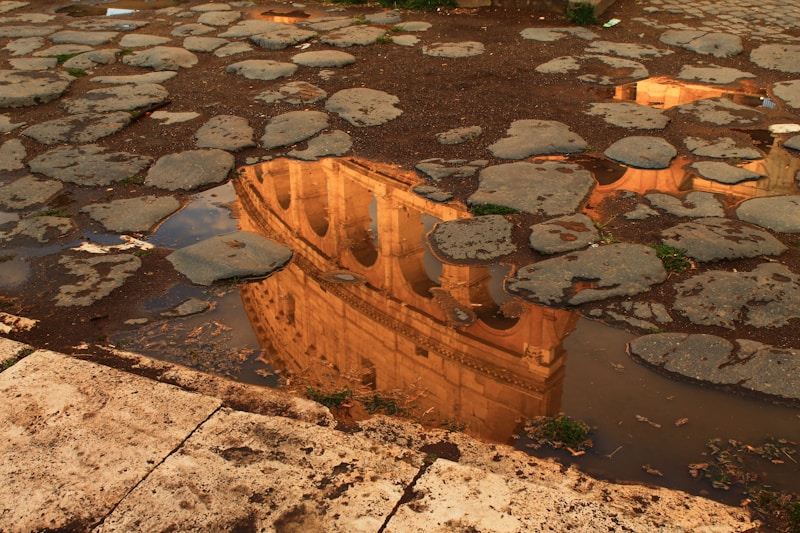The Role of Monuments in Bridal Traditions: A Historical Perspective
The Role of Monuments in Bridal Traditions: A Historical Perspective
Understanding the Significance of Monuments in Bridal Ceremonies
Bridal traditions vary immensely across cultures, often enriched by historical monuments that hold great significance. These structures not only symbolize the cultural heritage of a community but also serve as backdrops for some of life’s most critical celebrations. In this article, we will delve into the role of monuments in bridal traditions, exploring how different cultures integrate historical sites into their nuptial rites, and examining the deeper meanings behind these practices.
What are Monuments and Their Cultural Significance?
Monuments are structures that are erected for commemorative purposes. They can be anything from grand buildings and religious sites to smaller, lesser-known structures. Monuments often represent ideals, commemorate historical events, or honor significant figures within a culture. In the context of bridal traditions, they serve as powerful symbols of cultural identity and continuity.
The Historical Context of Bridal Monuments
Throughout history, weddings have been celebrated as pivotal life events, often marked by specific locations that hold cultural significance. For example, in many Asian cultures, temples serve as sacred spaces where couples seek blessings. In Europe, castles and palaces are often the chosen venues for royal weddings, reflecting the grandeur associated with marriage among nobility. Here is a quick summary of notable cultural practices:
| Region | Common Monuments | Significance in Bridal Traditions |
| India | Havelis and Temples | Serve as auspicious sites for undertaking marriage rituals |
| United Kingdom | Castles and Cathedrals | Associated with royal or elite weddings, signifying status |
| Japan | Shinto Shrines | Offer spiritual blessings during Shinto weddings |
| Mexico | Churches and Colonial Haciendas | Reflect historical and religious bonds within the community |
Monuments as Symbols of Love and Commitment
Many couples choose to incorporate significant monuments into their bridal ceremonies for various reasons. These locations often symbolize enduring love and commitment. For instance, the iconic Taj Mahal in India, built as a mausoleum for Mumtaz Mahal, serves as a symbol of eternal love. Couples often choose to visit this monument to commemorate their unions, emphasizing the importance of love in their weddng vows.

Regional Examples of Monumental Influence in Weddings
India: The Great Havelis
In India, grand havelis or palatial homes serve as stunning venues for weddings. Many families seek to honor their heritage by hosting lavish celebrations in these historical structures. The intricate architecture and cultural significance of these havelis add to the splendor of the ceremony. Ceremonies often include traditional rituals that are steeped in history, fostering a sense of continuity and community.
United Kingdom: Castles and Royal Weddings
In the UK, castles such as Windsor Castle have played host to numerous royal weddings. These locations are steeped in history and convey a sense of grandeur that cannot be replicated elsewhere. With the rise of social media, many couples aim to recreate this royal experience, leading to an increase in castle-themed weddings at various venues throughout the UK.
Japan: Shinto Shrines for Spiritual Blessings
In Japan, Shinto shrines are often chosen for their serene environments and spiritual significance. Couples seeking to incorporate a traditional element into their wedding frequently select these shrines as venues to receive blessings from the kami (deities). The solemn yet beautiful backdrop enhances the spiritual aspect of their union.
Mexico: Colonial Churches and Cultural Heritage
In Mexico, colonial churches stand as testaments to the nation’s rich history. Many couples opt to get married in these churches, not only for their aesthetic appeal but also for the deep cultural ties they hold. The vibrant customs, music, and rituals associated with weddings in these churches provide a unique atmosphere that reflects the couple's roots.
Modern Adaptations of Traditional Monuments for Weddings
In recent times, there’s been a noticeable trend of couples opting for non-traditional venues while still honoring historical monuments. For instance, destination weddings have surged in popularity as couples seek to combine travel and cultural experiences with their wedding celebrations.
Some couples are also choosing to say "I do" in historic locations relevant to their personal stories, such as the place where they first met or had a memorable trip together. This practice adds a personal touch while still respecting the historical significance of the monument.
The Impact of Monuments on Bridal Traditions Across Cultures
Bridal traditions tied to historical sites are essential in shaping cultural identities. They create a sense of belonging and allow couples to connect their love stories to their heritage. This trend continues to evolve and change with time, but the significance of these monuments remains unwavering.
Monuments have proven to be more than mere structures; they embody love, commitment, and cultural integrity. In various cultures around the globe, these iconic sites will continue to be significant elements of bridal traditions.
Key Takeaways and Tips for Incorporating Monuments into Your Wedding
When planning a wedding that honors both personal and cultural significance, consider the following tips:
- Research Local Monuments: Understand your local history and discover monuments that resonate with your cultural identity.
- Book Early: Popular wedding venues often require booking months in advance, particularly historical sites.
- Plan for Permits: Certain monuments may require permits for ceremonies and photography, be sure to check in advance.
- Incorporate Cultural Traditions: Blend your wedding with rituals that honor both your heritage and the monument’s significance.
- Personal Touches: Customize your ceremony by including personal stories related to the monument you choose.
In conclusion, monuments play a crucial role in bridal traditions worldwide. They symbolize the fusion of love and culture, offering couples a way to honor their histories while embarking on a new journey together. By thoughtfully incorporating these historical sites into wedding celebrations, couples can create lasting memories rich with meaning and significance.
